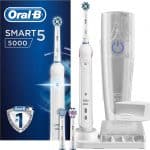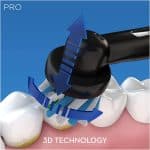Table of Contents
There are a few things you need to know when it comes to dental assistant training. Many people are confused between dental assistants and dental hygienists, which are two different sub-professions in the dental field.
The primary responsibilities of dental hygienists are to clean the teeth and gums of the patient, perform inspection and report the findings to a dentist. Dental assistants, on the other hand, perform tasks such as preparing the patients, dental tools, equipment, scheduling patients, and other office duties.
Aside from preparing the patient for dental treatment, the dental assistant can also provide help in processing x-rays, preparing materials for specific dental treatments, applying topical anesthesia, and more. They also help dentists during dental surgery by rinsing the patient’s mouth, sterilizing dental tools, preparing surgical instruments, and helping the patient overcome stress.
According to the Bureau of Labor Statistics (BLS), there were more or less 300,000 dental assistants in the US in 2008. About 98% of these dental assistants work in a dental office.
Requirements for Dental Assistant Training
Not similar with dental hygienists, there is no required academic degree that you need to complete to become dental assistant. But there are training programs that are available for individuals who want to acquire the required skills and basic knowledge that are necessary to become a dental assistant.
You have three options – 1 year diploma on dental assisting, 2-year associate’s degree diploma from a vocational school, or get experience as a dental assistant through internship programs.
The internship programs are often offered by hospitals and dental clinics, and you can often learn the skills through hands-on experience. You can also learn things that you can never acquire from school.
 License and Certification for Dental Assistants
License and Certification for Dental Assistants
Most states in the US require dental assistants to be licensed before they can work. In addition to a license, there is also usually a requirement for a certain amount of edcation and an exam has to be passed.
In reference with the BLS, the credentials of dental assistants can be used in 37 US states, and regulated by the Dental Assisting National Board (DANB).
The Advantages and Disadvantages of Becoming a Dental Assistant
The main benefit of becoming a dental assistant is the positive career perspective because of the increased job opportunities for DAs. According to BLS, this career has a chance to experience 36% growth in ten years (2008 to 2018).
In addition, the required academic background and dental assistant training is very minimal. Many dental assistants like their career because they don’t need to come to work at night, during weekends and holidays.
One primary disadvantage of becoming a dental assistant is the lack of opportunities to advance in this career field. Hence, many individuals are undergoing dental assistant training as their stepping stone for a more advanced career in the healthcare industry, particularly in dentistry.
Another disadvantage is you will probably spend at least part of your day looking into the mouths of your patients. This may “gross out” some people, while not bother others.
A plus is that dental assistants will spend less time doing this than dental hygienists, whose primary task is cleaning the patient’s teeth.
Average Salary for Dental Assistants
Based on the reports from the BLS, the average income of dental assistants is $34,500 per annum as of May 2012. Those in the top 10 percent of the profession earned more than $47,580, which is a very promising salary considering that the required dental assistant training is minimal (depending on your state). When you also take in the fact we all need to maintain and, where possible, improve our oral hygiene, these are literally jobs for life!













